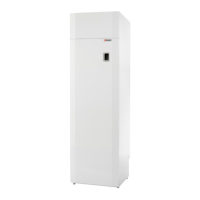Extract air
Install exhaust air valves in rooms that generate humidity. Place them strategically where they can
extract humidity most effectively.
Rooms that generate humidity:
• Bathroom
• Lavatory
• Kitchen
• Utility room
Supply air
Install supply air valves in living areas. Place them strategically so they cause minimum discomfort. It
is, for instance, not recommended that you install supply air valves in areas where people are inactive,
as the supply air may be experienced as draughty.
Living areas:
• Sitting room
• Living room
• Bedroom
• Home-office
Roof stacks
The position and design of air intake and air discharge should limit pressure oscillations in the
ventilation unit caused by wind. Their position should also prevent birds and other animals from getting
in. Finally, the position and design should ensure that air intake and the connected duct system are
kept free of plants and foreign objects.
You must place the air intake so that the risk of a short-circuit from the discharge air is minimized, with
attention to the prevailing wind direction.
The air intake should be placed at least 0.5 m from the roof surface. On black, flat roofs the distance
from the roof to the underside of the intake should be at least 1 m to ensure that warm air is not drawn
into the building in the summer. Air intakes should be located on the northern or eastern sides of
pitched roofs.
You should also install a silencer between the unit and the roof stacks to prevent noise from disturbing
your surroundings.
Balancing
Important information
ATTENTION
To ensure the ventilation system operates optimally, it is important that it is balanced
correctly. We recommend that experts do this.
It is important to measure the total supply air and the total extract air. The system must have a
minimum vacuum, which means it must draw out more air than it blows in. This will prevent
dampness from being forced into the construction of the building.
30

